DiverTexas
Well-Known Member
I got my grinding tables all set up now and started on my first blade.
I think I should have notched my plate that will cut the bevel on the blades the same way as I did on the one at the contact wheel. Is that right?
Second question is on the contact wheel table location.
Should the top surface of it be at the center of the wheel or slightly above or below it? As it is now, the table is below the centerline of the wheel.
Here are some pics that hopefully make these questions easier to visualise.
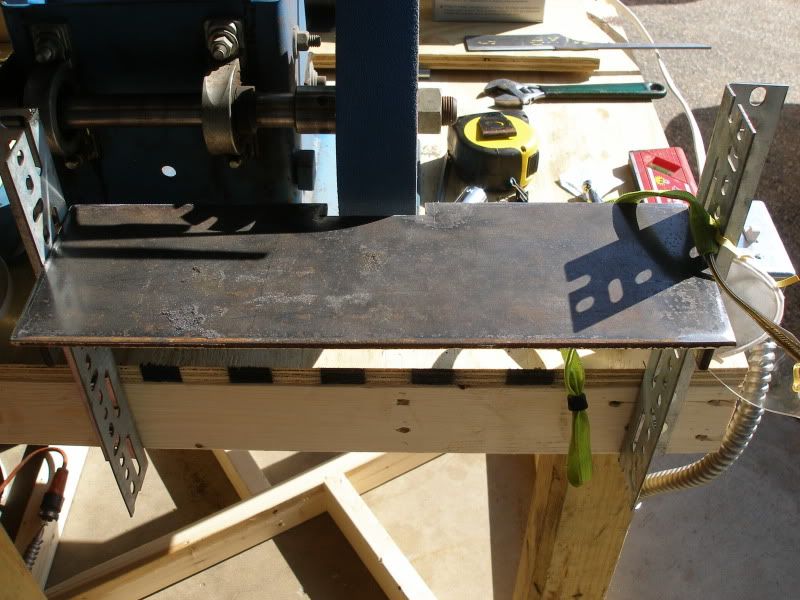
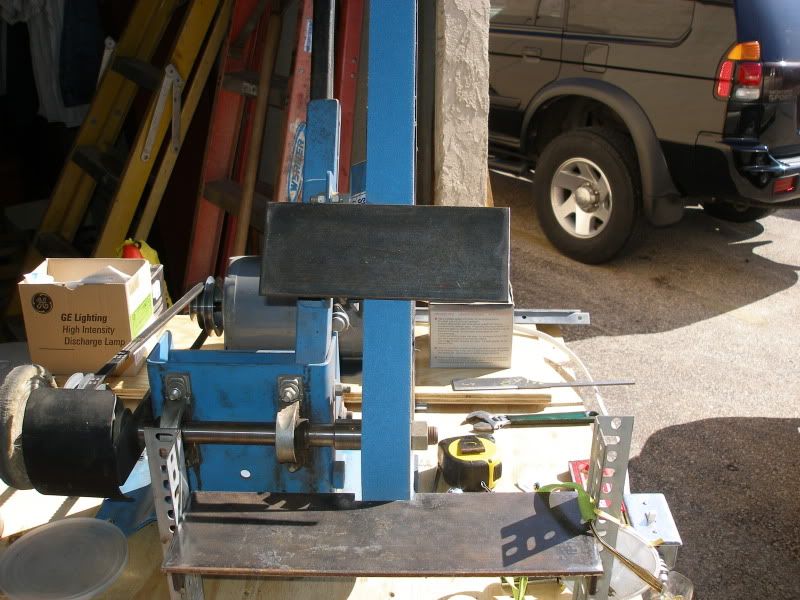
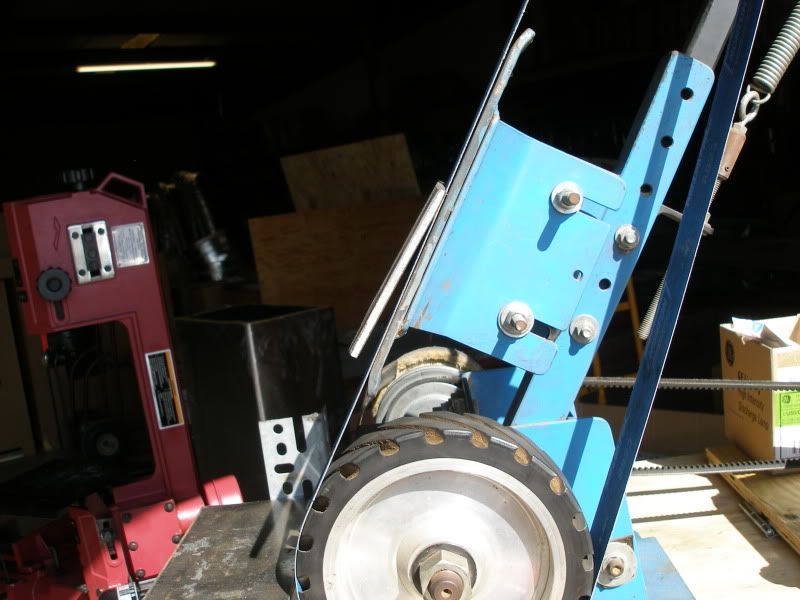
Another question on the plate for grinding the bevels.
How do I determine the proper angle to grind my primary and my secondary bevels?
I have the table fully adjustable by just loosening 2 bolts to change that angle, you can probably see it in this picture.
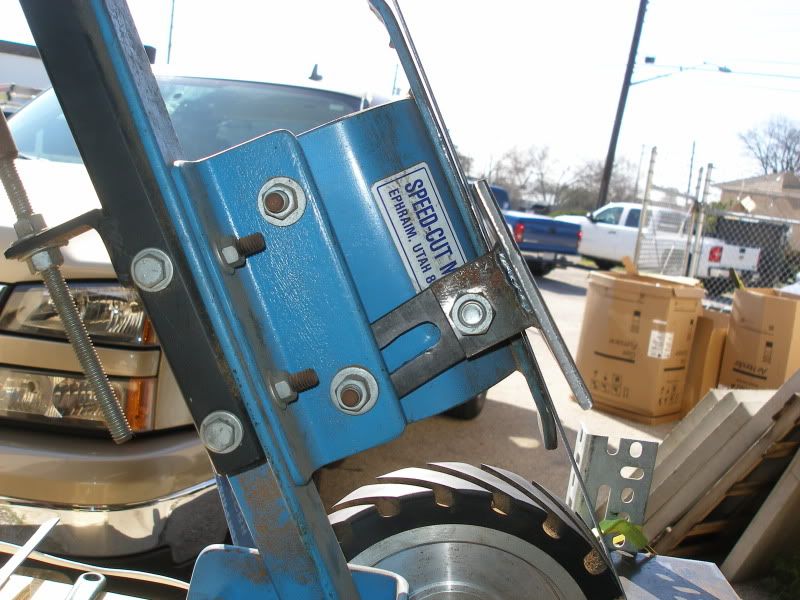
Next a few questions on the blade itself.
I started grinding on it and have it down to a fairly sharp edge, but my bevel is only about 1/4" total. Is that because I don't have enough angle on the grinding table or too much angle? A couple of pics of it too.
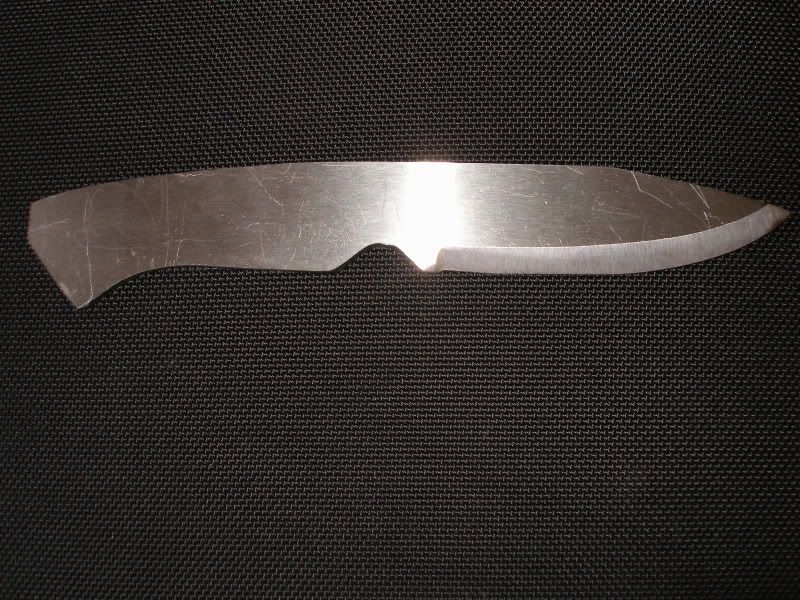
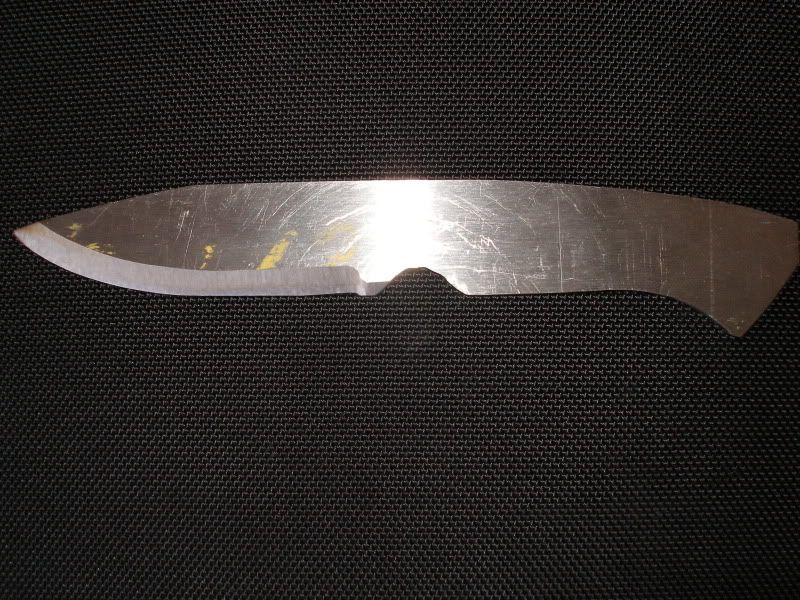
And one final question. As I was grinding out toward the tip of the blade, I could feel the metal getting almost too hot for me to hold. After dipping it in water, I noticed I could see a discoloration on the tip. Is this something I need to be concerned with or will that go away after HT and final sanding?
Here is a pic of the tip.

Sorry for all the questions guys, but this is my first blade and attempt at grinding so any and all knowledge I can get from others will hopefully let me turn out a decent knife.
Thanks in advance for any input.
I think I should have notched my plate that will cut the bevel on the blades the same way as I did on the one at the contact wheel. Is that right?
Second question is on the contact wheel table location.
Should the top surface of it be at the center of the wheel or slightly above or below it? As it is now, the table is below the centerline of the wheel.
Here are some pics that hopefully make these questions easier to visualise.



Another question on the plate for grinding the bevels.
How do I determine the proper angle to grind my primary and my secondary bevels?
I have the table fully adjustable by just loosening 2 bolts to change that angle, you can probably see it in this picture.

Next a few questions on the blade itself.
I started grinding on it and have it down to a fairly sharp edge, but my bevel is only about 1/4" total. Is that because I don't have enough angle on the grinding table or too much angle? A couple of pics of it too.


And one final question. As I was grinding out toward the tip of the blade, I could feel the metal getting almost too hot for me to hold. After dipping it in water, I noticed I could see a discoloration on the tip. Is this something I need to be concerned with or will that go away after HT and final sanding?
Here is a pic of the tip.

Sorry for all the questions guys, but this is my first blade and attempt at grinding so any and all knowledge I can get from others will hopefully let me turn out a decent knife.
Thanks in advance for any input.

